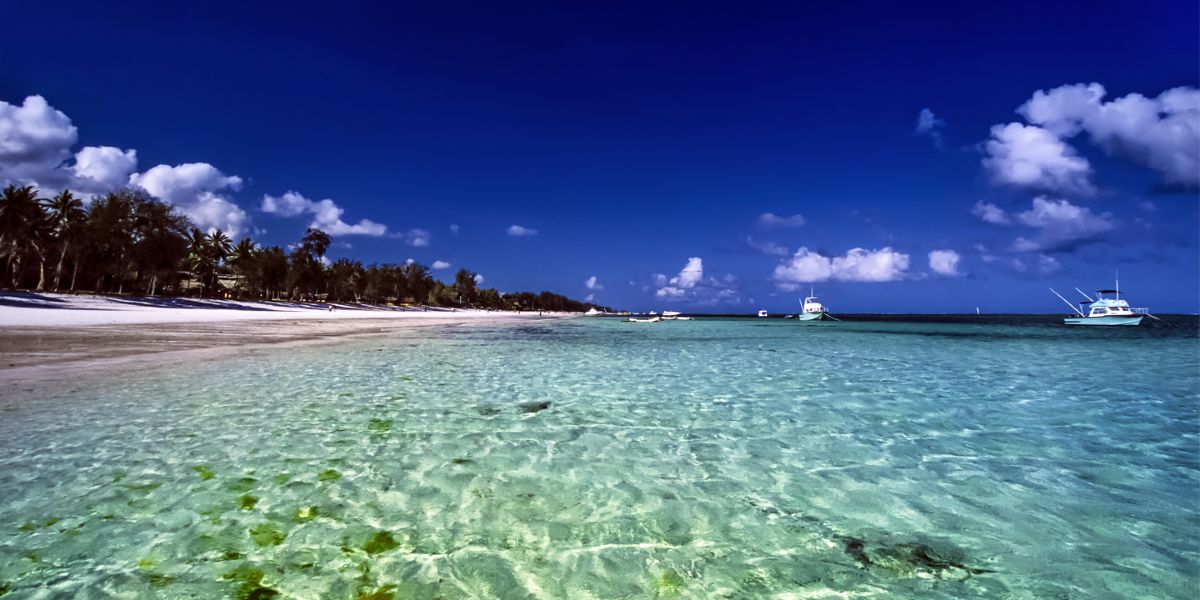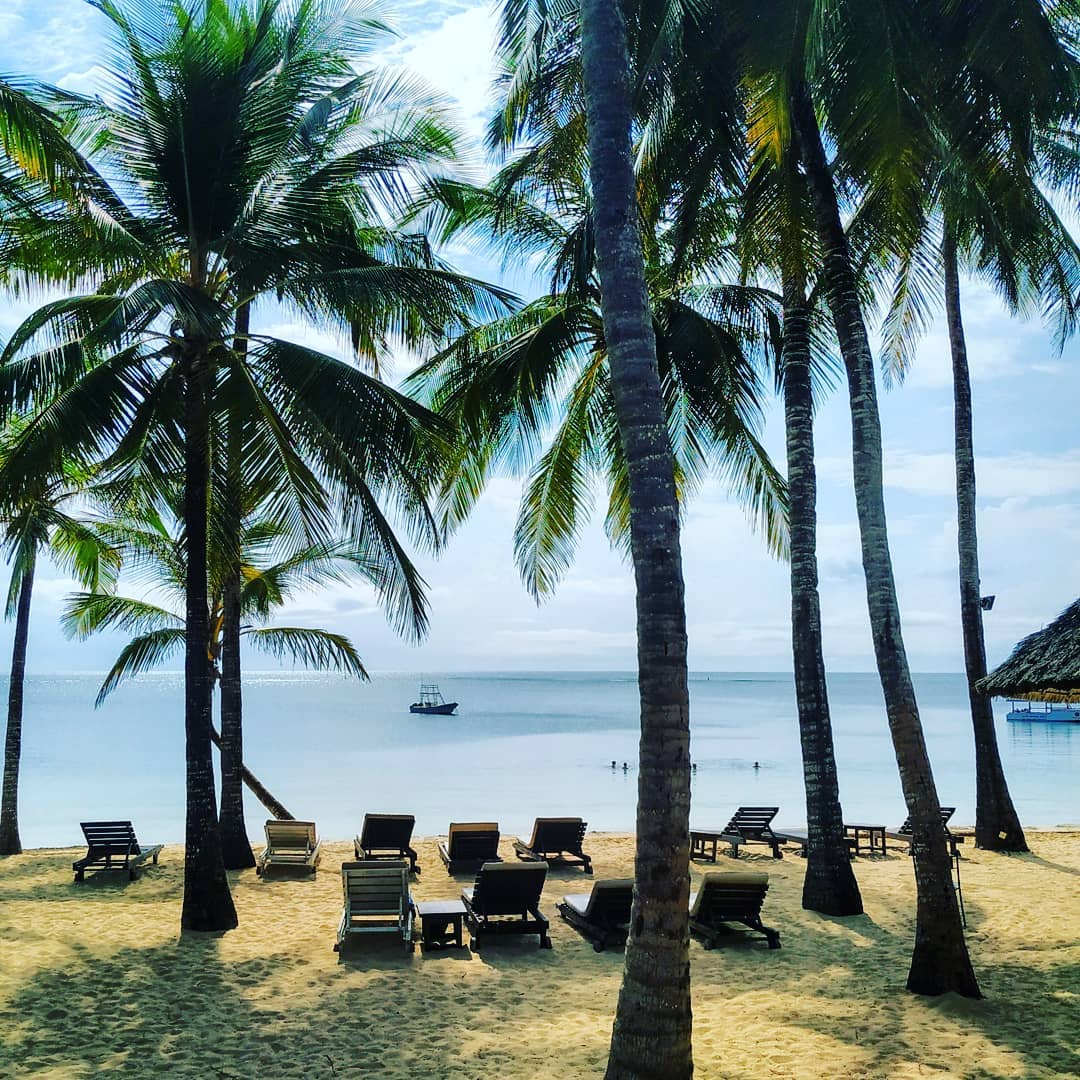Malindi Marine Park and Reserve was the first marine protected area in Kenya, established in 1968 and designated as a Biosphere Reserve under the Man & Biosphere Reserve programme of UNESCO in 1979. The park has a total area of 6 km2 and lie between Lat. 3o and 4o South. It is located south of Malindi town extending to Mida creek. It neighbors Gede ruins and Arabuko Sokoke forest. The park is enveloped by a national reserve and a 100 ft strip of coastal land starting from Vasco-da-Gama pillar to Watamu. The reserve covers 213 km2 and extends three and a half nautical miles out to seaward.
Malindi Marine Park and Reserve was established for the following objectives:
1. Encourage public education, understanding, appreciation, recreation and enjoyment of marine natural resources
2. To conserve and maintain representative areas of the marine ecosystem
3. To promote research of marine ecosystem
4. To provide opportunities for generation of economic benefits
The Park and Reserve has features such as being easily accessible by road and air, hosting rich and relatively unaffected marine biodiversity, beautiful beach and warm water safe for swimming among other factors to achieve the objectives outlined above.
The reefs of Malindi are seasonally inundated by silty waters from the Sabaki River. Maximum river discharges occurs during the long (April - July) and short (October - December) rainy seasons at the coast. The waters of Malindi bay are colored red at this time and depending on when the winds switch from the Northeast monsoon to the Southeast monsoons, the sediment plume may reach as far as Malindi Marine Park. This sometimes decreases visibility and the aesthetic quality of the reefs in park.
Roads:
• 118 Kilometers tarmac road from Mombasa to Malindi town.
Airstrip: Malindi Airport
Facilities:
* 3 single beds and 6 twin beds self-contained cottages. Comfortable and cost effective with a spacious dining hall. Kitchen can be hired for self catering services, or with service of a cook.
* Campsite has cool shade of indigenous trees which provides scenic and serene environment with a marked nature trail. Your stay here will bring back memories of unspoiled splendor because nature is precisely as it was intended to be. Equipped with 2 erected barbeque and cooking area, working security lights, 2 flush toilets, 2 pit latrines, 5 showers.
* A Resource center with conference hall for a capacity of 50 people with audio-visual equipment, a library and laboratory is available for hire.
* An education center with audio-visual equipment and colorful and informative posters displayed for visitor’s free access.
Activities:
Swimming in the warm ocean water, Snorkeling, Boat rides, Diving, Dhow rides, Sun bathing, Educational tour, Picnic and barbeque on Island, Wind surfing (in the reserve), Beach clean up, Research, KWS patrols and much more
Marine Animals and Plants:
Turtles:
Green, Hawksbill, Olive Ridley, loggerhead. Green and Hawksbill turtle breeds in the park
Fishes: (Experience an amazing new world under water!)
Over 300 species of fish have been recorded in the park with most common groups including: Angelfish, Barracuda, Butterfly fish, Goatfish, Fusiliers, Emperors, Groupers, Grunt/Sweetlips, Jacks, Parrotfish, Rabbit fish, Sharks, Snappers, Surgeon fish, Triggerfish and Wrasses.
Invertebrates:
Atleast 135 species of gastropods and 12 species of echinoids have been identified in the park and reserve. The common invertebrates within the park include: Clams, Crown of thorns, Lobsters, Octopus, Sea anemone, Sea cucumber, Sea stars, Sea urchins, crabs and Shells.
Benthic cover:
200 species of algae have been identified. A total of 55 genera and 145 species of hard coral have been recorded on the north reef. Generally the substrate is covered by Coralline algae, Halimeda, Dead Coral, Soft Coral, Fleshy algae, Sand, Hard Coral, Rubble, Algal Turf.
Corals: (come in many colors, shapes and sizes!)
Boulder coral, organ pipe Coral, Sea grass, Stag Horn Coral.
Birds:
Variety of migrant shore and terrestrial birds.
Plants:
Generally a wide variety of terrestrial plants are found on the shore surrounding the Marine Park. Some of the species include; Suregada zanzibariensi, Turraea wakefieldii, Cainthium glaucitin, Flueggea virosa, Turraea nilotica, Casuarinas equisetifolia, Delonix regia, Azadirachta indica. On some of these plants, you will find insects of different kinds such as butterflies, moths, bees, ants, wasps.
Mammals: (Splendid and spectacular adventures you can’t afford to miss!):
The Dolphins.
KWS community program
The Kenya wildlife service works closely with communities living around the park to manage and conserve wildlife. Community programs have been developed through Community Wildlife Service Department where adjacent communities around the park benefit in various ways from the parks. This is in realization of the fact that local community participation in different aspects of wildlife management including consultations during the planning and implementation of any exercise are important factors in ensuring the success of any conservation project.
Malindi Marine Park hosts one registered boat operators association called AMBO/MGBOCA association (Association of Malindi Boat Owners (AMBO) and the Malindi Glass Boat Owners and Captains Association (MGBOCA)). The association own boats which ferry visitors to designated snorkel, picnic, barbeque and dive sites in the MPA. Visitors pay park entry fee and a separate negotiated amount that covers the hire of a boat and equipment. Revenue from boat hire go to meeting association member’s basic needs (shelter, food, medical, school fees), give loan to members in addition to boat and engine maintenance and running expenses.
The association members also own sunbathing beds and mattresses which they hire to visitors at affordable rates. In addition to the native Swahili language, most of the boat operators speak a smattering of English, Italian and German.
There is a high degree of compliance with the Marine Park regulations, reporting any illegal activity like fishing within the park and cleaning of beach by boat operators indicating that this community-KWS collaboration is largely contributing to marine resource conservation as well as alleviating poverty within the community.



